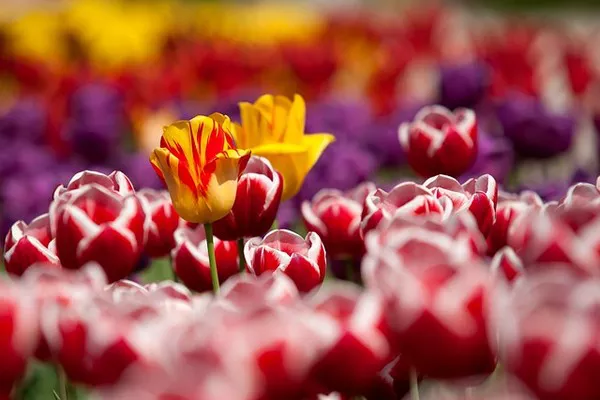Researchers from Monash University have delved into the ancient relationship between bees and the evolution of floral colors using advanced computer simulations. The findings, detailed in the Proceedings of the Royal Society B, shed light on the intricate connection between pollinators and the vibrant hues that adorn flowers, dating back many tens of millions of years.
Associate Professor Alan Dorin, the lead author and Director of the NativeBee+Tech Facility in the Faculty of Information Technology at Monash University, explained that insects like bees developed visual perception long before the emergence of flowers. This early visual acuity was essential for these insects to navigate and orient themselves among the diverse landscapes of rocks, leaves, sticks, and bark.
The research results underscore the notion that the first flowers evolved brilliant colors to stand out from their relatively dull surroundings, a strategic move to attract the attention of ancient pollinators. Simulating the landscape of the first flowering plants from the Mesozoic era (between 252 million and 66 million years ago), the researchers tested the visibility of these flowers to pollinators like bees and birds.
Using color spectrum measurements from Australia’s ancient bushland, the researchers recreated landscapes from the Mesozoic era. Associate Professor Dorin emphasized the significance of Australia’s geological antiquity in this context.
Associate Professor Adrian Dyer, a vision scientist and co-author of the study from the Department of Physiology at Monash’s Faculty of Medicine, Nursing, and Health Sciences, highlighted that this research establishes a strong link between the visual perception of ancient pollinators and present-day bees. The study reveals that bees possess ultraviolet (UV), blue, and green photoreceptors, similar to their ancestors, providing insights into the evolution of common flower colors like yellow, which are easily perceived by bees.
This groundbreaking research not only deepens our understanding of the historical interplay between pollinators and flowers but also holds contemporary implications. The findings contribute to informing the dynamics of plant species pollination in the current era and offer potential avenues for advancements in smart agriculture. The study paves the way for further exploration in the realm of efficient crop pollination, showcasing the enduring relevance of ancient relationships in shaping the colorful tapestry of nature.


